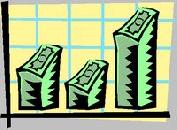
 |
|
| Financial Terms | |
| Short interest |
|
Information about financial, finance, business, accounting, payroll, inventory, investment, money, inventory control, stock trading, financial advisor, tax advisor, credit.
Main Page: finance, stock trading, accounting, credit, investment, financial, tax advisor, payroll, |
Definition of Short interest
Short interestThis is the total number of shares of a security that investors have borrowed, then sold in the
Related Terms:fractional interest discountthe combined discounts for lack of control and marketability. g the constant growth rate in cash flows or net income used in the ADF, Gordon model, or present value factor. Accrued interestThe accumulated coupon interest earned but not yet paid to the seller of a bond by the Amortizing interest rate swapSwap in which the principal or national amount rises (falls) as interest rates Base interest rateRelated: Benchmark interest rate. Benchmark interest rateAlso called the base interest rate, it is the minimum interest rate investors will Best-interests-of-creditors testThe requirement that a claim holder voting against a plan of reorganization Capitalized interestinterest that is not immediately expensed, but rather is considered as an asset and is then  Cash flow after interest and taxesNet income plus depreciation. Compound interestinterest paid on previously earned interest as well as on the principal. Covered interest arbitrageA portfolio manager invests dollars in an instrument denominated in a foreign Earnings before interest and taxes (EBIT)A financial measure defined as revenues less cost of goods sold Effective annual interest rateAn annual measure of the time value of money that fully reflects the effects of Equilibrium rate of interestThe interest rate that clears the market. Also called the market-clearing interest Forward interest rateinterest rate fixed today on a loan to be made at some future date. Gross interestinterest earned before taxes are deducted. InterestThe price paid for borrowing money. It is expressed as a percentage rate over a period of time and  Interest coverage ratioThe ratio of the earnings before interest and taxes to the annual interest expense. This Interest coverage testA debt limitation that prohibits the issuance of additional long-term debt if the issuer's Interest equalization taxTax on foreign investment by residents of the U.S. which was abolished in 1974. Interest paymentsContractual debt payments based on the coupon rate of interest and the principal amount. Interest on interestinterest earned on reinvestment of each interest payment on money invested. Interest-only strip (IO)A security based solely on the interest payments form a pool of mortgages, Treasury Interest rate agreementAn agreement whereby one party, for an upfront premium, agrees to compensate the Interest rate capAlso called an interest rate ceiling, an interest rate agreement in which payments are made Interest rate ceilingRelated: interest rate cap. Interest rate floorAn interest rate agreement in which payments are made when the reference rate falls Interest rate on debtThe firm's cost of debt capital.  Interest rate parity theoreminterest rate differential between two countries is equal to the difference Interest rate riskThe risk that a security's value changes due to a change in interest rates. For example, a Interest rate swapA binding agreement between counterparties to exchange periodic interest payments on Interest subsidyA firm's deduction of the interest payments on its debt from its earnings before it calculates Interest tax shieldThe reduction in income taxes that results from the tax-deductibility of interest payments. Nominal interest rateThe interest rate unadjusted for inflation. Open interestThe total number of derivative contracts traded that not yet been liquidated either by an Pooling of interestsAn accounting method for reporting acquisitions accomplished through the use of equity. Rate of interestThe rate, as a proportion of the principal, at which interest is computed. Real interest rateThe rate of interest excluding the effect of inflation; that is, the rate that is earned in terms Selling shortIf an investor thinks the price of a stock is going down, the investor could borrow the stock from ShortOne who has sold a contract to establish a market position and who has not yet closed out this position Short bondsBonds with short current maturities. Short bookSee: unmatched book. Short hedgeThe sale of a futures contract(s) to eliminate or lessen the possible decline in value ownership of Short positionOccurs when a person sells stocks he or she does not yet own. Shares must be borrowed, Short saleSelling a security that the seller does not own but is committed to repurchasing eventually. It is Short sellingEstablishing a market position by selling a security one does not own in anticipation of the price Short squeezeA situation in which a lack of supply tends to force prices upward. Short straddleA straddle in which one put and one call are sold. Shortage costCosts that fall with increases in the level of investment in current assets. Shortfall riskThe risk of falling short of any investment target. Short-run operating activitiesEvents and decisions concerning the short-term finance of a firm, such as Short-term financial planA financial plan that covers the coming fiscal year. Short-term investment servicesServices that assist firms in making short-term investments. Short-term solvency ratiosRatios used to judge the adequacy of liquid assets for meeting short-term Short-term tax exemptsshort-term securities issued by states, municipalities, local housing agencies, and Simple interestinterest calculated only on the initial investment. Related:compound interest. Spot interest rateinterest rate fixed today on a loan that is made today. Related: forward interest rates. Stated annual interest rateThe interest rate expressed as a per annum percentage, by which interest Times-interest-earned ratioEarnings before interest and tax, divided by interest payments. True interest costFor a security such as commercial paper that is sold on a discount basis, the coupon rate Earnings before interest and taxes (EBIT)The operating profit before deducting interest and tax. Earnings before interest, taxes, depreciation and amortization (EBITDA)The operating profit before deducting interest, tax, depreciation and amortization. InterestThe cost of money, received on investments or paid on borrowings. Profit before interest and taxes (PBIT)See EBIT. Interest incomeIncome that a company receives in the form of interest, usually as the result of keeping money in interest-bearing accounts at financial institutions and the lending of money to other companies. Interest payableThe amount of interest that is owed but has not been paid at the end of a period. earnings before interest and income tax (EBIT)A measure of profit that times interest earnedA ratio that tests the ability of a business to make Accrued InterestThe amount of interest accumulated on a debt security between Compound Interestinterest paid on principal and on interest earned in previous Effective Interest RateThe rate of interest actually earned on an investment. It is Nominal Interest RateThe rate of interest quoted, or stated, to be paid on a security Real Interest RateThe rate of interest paid on an investment adjusted for inflation Simple Interestinterest paid only on the principal; calculated by multiplying the Times Interest Earned RatioA measure of how well a company is able to meet its interest compound interesta method of determining interest in which interest that was earned in prior periods is added to the original investment so that, in each successive period, interest is earned on both principal and interest simple interesta method of determining interest in which interest is earned only on the original investment (or principal) amount Short rateThe annualized one-period interest rate. Short sale, short positionThe sale of a security or financial instrument not InterestThe cost of funds loaned to an entity. It can also refer to the equity ownership Pooling of interestsAn method for accounting for a business combination. When used, the expenses of the combination are charged against income at once, and the net compound interestinterest earned on interest. effective annual interest rateinterest rate that is annualized using compound interest. interest rate parityTheory that forward premium equals interest rate differential. interest tax shieldTax savings resulting from deductibility of interest payments. nominal interest rateRate at which money invested grows. real interest rateRate at which the purchasing power of an investment increases. shortage costsCosts incurred from shortages in current assets. short positionThe sale of an investment, particularly by someone who does not yet own it. simple interestinterest earned only on the original investment; no interest is earned on interest. Interest Rate DifferentialThe interest rate on our financial assets minus the interest rate on a foreign country's financial assets. Interest Rate, NominalPayment for the use of borrowed funds, measured as a percentage per year of these funds. Interest Rate ParityTheory that real interest rates are approximately the same across countries except for a risk premium. Interest Rate, RealNominal interest rate less expected inflation. Money Rate of InterestSee interest rate, nominal. Real Rate of InterestSee interest rate, real. Term Structure of Interest RatesRelationship among interest rates on bonds with different terms to maturity. Capitalized Interestinterest incurred during the construction period on monies invested in Earnings Before Interest, Taxes, Depreciation, and Amortization (EBITDA)An earningsbased measure that, for many, serves as a surrogate for cash flow. Actually consists of working Compound Interestinterest earned on an investment at periodic intervals and added to principal and previous interest earned. Each time new interest earned is calculated it is on a combined total of principal and previous interest earned. Essentially, interest is paid on top of interest. Related to : financial, finance, business, accounting, payroll, inventory, investment, money, inventory control, stock trading, financial advisor, tax advisor, credit. |